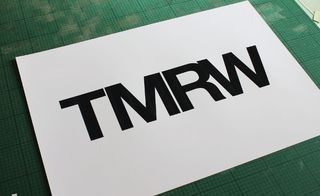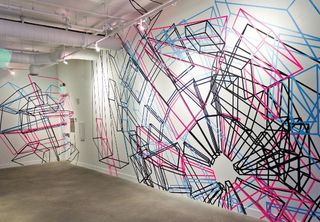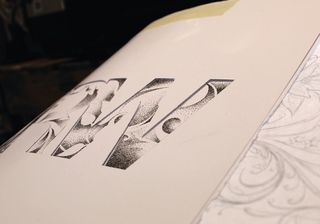10 ways to charge your clients the proper price
It's a fine line between selling yourself short and pricing yourself out of the market; follow our guide to getting your price right
1 How much time will it take to do?
How long the work will take you to complete is the main factor to take into account when pricing up a job. It doesn’t matter whether you’re a bricklayer or dentist, what you charge is based on the going market rate for your particular skills and how long the work takes. There are numerous accounting formulas for developing an hourly rate, and you can even find dedicated apps and websites that’ll do the maths for you.

2 What can they pay?
Think about what your client can afford. Different market sectors have different financial ceilings. This doesn’t mean being exploitative, but a large, stable company will have a bigger budget than a small independent start-up. If the latter can’t afford your average quote then reduce it, without leaving yourself out of pocket.
3 What will your final work be used for?
Design work is design work, right? Wrong. Your work is a tradable commodity with a value based on its capacity to generate revenue for your client. Thinking like this underlines the difference between a small local print advert and an international TV campaign. The latter has a vast reach and potential to generate much higher capital for your client, so price accordingly.

4 What volume will it be used in?
The same scale stands for volume. If you’re an illustrator, for instance, then granting usage of your artwork for 1,000 posters is less expensive than 10,000, and the same goes for websites, apps and other digital design commodities. How many hits is it likely to achieve? What is the item’s sales target? These are questions you should ask and your client should hopefully be open about answering. Again, the bigger the project, the bigger the fee.
5 When is it due?
Now don’t think about how long it’ll take, but how long or short the deadline you’ve been given is. There are dozens of factors that affect a quote, but you should always be aware of necessity. If it’s a high-priority job, then there’s a financial reason for this – nobody wants to rush through any job without a good reason, and more often than not, this reason is a commercial one. Shorter turnarounds will require longer working hours, so bill for them.

6 Who will own the rights to the work?
If you’re signing over all reuse rights and copyright, then factor this in. Intellectual property is yours unless explicitly signed over to your client in a contract, so read anything you’re asked to sign thoroughly. For big jobs you could have a lawyer check the terms of use and ownership rights. You don’t want to be another John Pasche (who was paid £50 for the Rolling Stones lips logo and just £250 for reuse rights).
7 What expenses will you incur?
Will you have to buy fonts for the job? Any specialist equipment? What about hiring photographers, models and makeup artists? These are all top-line expenses to factor in when quoting. There are also bottom-line expenses – such as travel, accommodation and even food – that influence your profit margin. Make sure you keep that as fat as possible.
Get the Creative Bloq Newsletter
Daily design news, reviews, how-tos and more, as picked by the editors.

8 How awesome is your reputation?
Don’t be arrogant, but be honest. If a client came to you because you’re in demand, then darn well make sure they pay for it. You might be an illustrator able to provide a particular style that’s crucial to your client’s project, or a digital designer who specialises in a field – such factors come at a premium, and clients will be willing to pay that bit more for your expertise.
9 How competitive do you want to be?
What do your contemporaries charge, bearing in mind that they might also be quoting on the project? There’s nothing wrong with asking your client this and basing your quote on their reply. But that doesn’t always mean undercutting the competition. For example, if your client’s existing quote comes from a newer, less reputable designer, you can legitimately quote a higher price than theirs, on the basis that you have the stronger portfolio.

10 How much do you want the work?
Is it an exciting brief? Do you have nothing else on? Are you down to your last packet of noodles and need the cash? Consider this before quoting. If you want the job for your portfolio or possible repeat business, then be competitive. Or if you don’t really fancy the job, quote high. But be warned: deviate from your formula and you could lose the pitch. Or worse, win it at a loss…
All illustrations by Thomas Boswell

Thank you for reading 5 articles this month* Join now for unlimited access
Enjoy your first month for just £1 / $1 / €1
*Read 5 free articles per month without a subscription

Join now for unlimited access
Try first month for just £1 / $1 / €1
The Creative Bloq team is made up of a group of design fans, and has changed and evolved since Creative Bloq began back in 2012. The current website team consists of eight full-time members of staff: Editor Georgia Coggan, Deputy Editor Rosie Hilder, Ecommerce Editor Beren Neale, Senior News Editor Daniel Piper, Editor, Digital Art and 3D Ian Dean, Tech Reviews Editor Erlingur Einarsson and Ecommerce Writer Beth Nicholls and Staff Writer Natalie Fear, as well as a roster of freelancers from around the world. The 3D World and ImagineFX magazine teams also pitch in, ensuring that content from 3D World and ImagineFX is represented on Creative Bloq.




